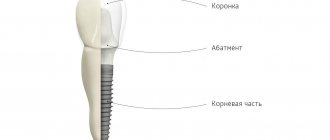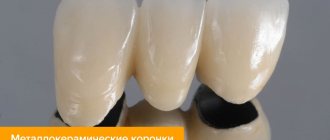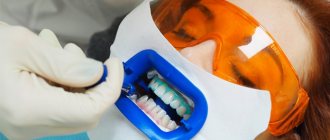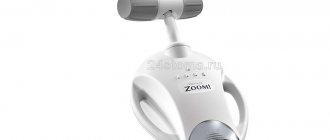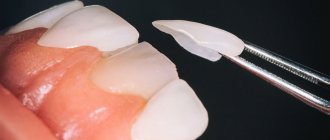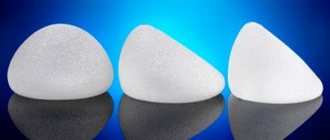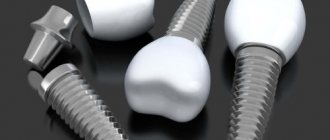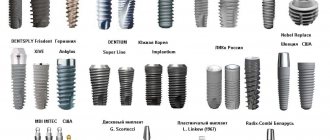Discussions and disputes regarding the choice of breast implant shape remain relevant. The correct choice of implant is one of the components of the success of mammoplasty, which concerns both the patient’s final perception of the new shape of her bust and minimizing the risk of developing postoperative complications and negative consequences.
Breast implants can be of various shapes – round and anatomical. According to popular opinion, anatomical implants, unlike round ones, give the breast a natural appearance and natural softness when touched. In fact, this statement has no serious basis.
Characteristics of breast implants
Implants intended for mammoplasty differ in the following characteristics:
- form;
- volume;
- projection;
- surface texture (smooth or textured).
The choice of implant is made by the surgeon depending on the surgical goals and techniques, anatomical features and personal preferences of the patient.
The natural shape of the breast is not round, but teardrop-shaped. The gradual increase in breast volume begins with a flat slope in the upper region, rising in its lower part. Therefore, anatomical implants that imitate the effect of gravity on the breasts look more natural at first glance and are ideal for creating breast shape. Initially, they were developed for reconstructive operations (for amputated or injured mammary glands).
However, despite the fact that the installation of anatomical implants seems quite logical, many surgeons and patients prefer to use round endoprostheses for mammoplasty.
Compared to anatomical ones, the use of round-shaped implants allows you to achieve greater volume and height of the breast, creating a beautiful neckline. However, not all women are delighted with the large volume in the upper part of the breast, considering this shape unnatural and preferring anatomical implants as the most natural.
Round implants can indeed add unnaturalness and artificiality to the outline of the bust. For example, this can happen if a patient insists on installing a large-volume implant high on her chest, while the volume of her own mammary gland tissue is insufficient. In this situation, it is not the shape of the implant that is to blame, but other factors that must be taken into account before mammoplasty. Implants of any shape can look fake. This depends on the suitability of the implant and the woman’s individual body contours. Sometimes round implants look more “anatomical” than the actual anatomical ones.
Round implants implanted into the mammary glands generally “behave” more naturally than teardrop-shaped ones. In the vertical position of the patient, under the force of gravity, they independently acquire an anatomical, natural shape. Round implants also have a more advantageous appearance when the woman is in a horizontal position. Anatomical implants “give themselves away” by their lower part sticking up, while a woman’s natural breasts, according to the laws of gravity, blur. Round implants look more natural when lying down. Round implants also look more natural during active movements of a woman - jumping, running, dancing, etc.
Immediately before performing augmentation mammoplasty, the surgeon must take into account many factors - both the woman’s wishes about the shape and size of the breast, and the aesthetic vision of the doctor about the need to choose certain approaches. The surgeon is the patient’s ally, so the woman should listen to his opinion. It is the close tandem of the patient and the doctor that ensures consistently good results and satisfaction from the work done.
The surgeon's many years of experience gives him the opportunity to make an informed decision about the brand of implant, its size, access for mammoplasty and many other nuances of the operation.
Selection of implant sizes
Bust measurements
To measure breasts, surgeons use different techniques and fairly simple instruments: surgical calipers and a plumb line.
One end of the plumb line is installed in the area of the jugular notch so that the free end passes in the middle of the navel. The first line (A) is drawn with a dotted line.
The second line is drawn parallel to the first, along the edge of the mammary gland (B). Line B runs perpendicular to line B along the upper edge of the breast. It usually corresponds to the third rib and can be felt. Auxiliary line D is perpendicular to B and runs along the outer edge of the gland, corresponding to the anterior anatomical axillary line. Line G runs along the fold of skin under the breast.
After this, the length of perpendicular segments passing through the nipple from line B to line D and from line B to line D is measured with a caliper.
3-D modeling of the mammary glands
3-D modeling will help you imagine what your breasts will look like with a particular breast implant.
To do this, a 3D simulator films the body in different projections, creating a three-dimensional image of your body. Then the size and shape of the breast with the implant is modeled, taking into account the volume of soft tissue (see photo). You can create several images with different types of implants, and then view them from all sides on a 3D model. After this, the final choice is made.
Comfort check
However, 3-D modeling does not answer the question of how comfortable you will be with breasts of the selected size. For this purpose, manufacturers have developed sizers - implant simulators. They are worn before surgery to select the appropriate model in terms of shape, profile and volume. It is recommended to wear under a tight sports bra that tightens the breasts well. Sizers cover the breasts, but are not underneath the breasts or the muscle and do not give a full view without a tightening.
Experienced surgeons recommend a simple way to check: buy a bra of the desired size, pour rice into a nylon stocking (300 ml for each “extra” size) and distribute the cereal evenly in the bra cup. You can walk around with such a bust for several days, play sports, do household chores, in general, do everything that you are used to in everyday life. This method will tell you how comfortable you will be with the new breast.
Round implants
A characteristic feature of round implants is that the height of the implant is equal to the width of its base. The point of maximum projection is located under the center of the implant base. Thus, the difference between all round implants of the same width lies in the size of the projection.
When placed in the tissue of a patient in a standing position, round implants may appear somewhat teardrop-shaped. This degree depends, first of all, on how high the density or compliance of the shells and filler of the implants is, as well as the properties of the patient’s tissues. When a round implant is placed under the pectoral muscle, the teardrop shape increases, in contrast to its supramuscular location, which is explained by the pressure of the pectoral muscle on the upper pole of the implant.
Teardrop-shaped (anatomical) implants
These implants are called anatomical due to the fact that this shape most closely matches the natural shape of the mammary gland. The main feature of teardrop-shaped implants is the location of the point of maximum projection of the implant below the center of its height, i.e. at the bottom of the implant. The vast majority of anatomical implants have different widths and base heights.
The main criterion for distinguishing teardrop-shaped implants with the same base width from each other is not only the size of the projection, but also different heights, which makes it possible for manufacturers to create wide universal model ranges of implants of the same style, differing in width, height and projection.
Thanks to this diversity, the surgeon has the opportunity to select the required shape of the implant for almost any variant of the anatomical features of the mammary glands.
Indications
There are no medical indications for undergoing breast augmentation in a plastic surgery clinic. In other words, the reason for surgical correction of the mammary glands is a woman’s desire to correct the shape or size of her bust. Therefore, plastic surgeons identify the following aesthetic deficiencies that can be eliminated during surgery:
- asymmetrical breast shape;
- micromastia (small breast size);
- sagging, drooping (ptosis) of the mammary glands after pregnancy and breastfeeding;
- condition after mastectomy (surgical breast removal);
- woman’s dissatisfaction with previously installed implants (their shape, size, etc.).
Should You Enlarge Your Breasts? The answer to this question is simple. If you have:
- breasts are too small compared to the rest of the body;
- there is discomfort while wearing a swimsuit, tight clothes or a large neckline;
- there is a problem with choosing clothes - what fits on the hips is too big in the chest;
- after childbirth, the breasts changed, ptosis of the mammary glands or other bust deformations developed;
- the breasts have decreased in volume and the skin has sagged due to sudden weight fluctuations;
- the mammary gland is noticeably smaller than the other;
- you need plastic surgery. Breast augmentation (mammoplasty) is the most correct and correct solution in cases where a woman experiences psychological discomfort from the inferiority of her own body. Surgical bust correction will allow young girls and older women to increase their own self-esteem, as well as get rid of complexes and problems. Mammoplasty today is considered the most reliable and effective way to increase the size and volume of the mammary glands, as it provides long-lasting results after plastic surgery.
Profile
The profile is considered one of the most important characteristics of the shape of the implant, representing the percentage ratio of the width of the base of the implant to the size of its projection. The smaller the base width and the larger the projection, the more high-profile the implants are considered. The “convexity” (with a high profile) or “flatness” (with a low profile) of the implant depends on the size of the profile.
Each manufacturer has its own idea of a high or low profile, which is due to the fact that they use different types of casings and fillers for the manufacture of their products, which differ in the degree of density and other characteristics.
In view of this, implants from different manufacturers differ in their ability to maintain the profile while in the tissue of the mammary glands.
For example, the McGhan line of implants is represented by several types, differing in profile height:
- low-profile implants (up to 32%);
- medium-profile implants (32-38%);
- high-profile implants (more than 38%).
Rehabilitation
Rehabilitation after breast augmentation is the key to excellent mammoplasty results. The patient is discharged from the plastic surgery clinic after breast correction on days 2-3. For 1-2 months it is necessary to wear compression garments, which will help fix the new breast shape and prevent the development of severe swelling. Also, the patient should not raise her arms up or carry heavy objects; physical activity is prohibited. It is recommended to sleep on your back to reduce the risk of breast injury and reduce pressure on the mammary glands after surgery. You should not visit the sauna, steam bath, sunbathe in the sun or solarium.
Important!
During the first 4-6 weeks after breast surgery, a capsule is formed around the silicone implant. If you do not follow the recommendations of the plastic surgeon, then there is a high risk of developing postoperative complications, which may lead to the need for repeated breast augmentation.
The first results of the operation can be seen after 4–6 weeks, when the mammary glands begin to take on a natural shape. At this time, swelling subsides and hematomas disappear. Breasts take on their final appearance 6 months after breast augmentation surgery at Dr. Osin’s plastic surgery clinic.
How to choose the right implants
When installing round implants, greater fullness of the upper pole and less fullness of the lower pole of the mammary glands is ensured, which distinguishes them from teardrop-shaped implants, other things being equal. This is more pronounced with a denser shell and filler of the implant. In addition, the upper contour of round implants is visualized brighter than teardrop-shaped ones in patients with a thin layer of integumentary tissue. When using round implants, there is a higher risk of “corrugation” or folds. These manifestations are less common when installing implants with a denser shell and filler.
Anatomical implants are characterized by greater fullness of the lower pole and less fullness of the upper pole. This is more pronounced in implants with a higher profile and lower height, denser shell and filler. Thanks to this property, drop-shaped implants have an effect that “lifts” the mammary gland, which makes it possible to use them to correct sagging breasts.
Teardrop-shaped implants, more than round ones, tend to retain their shape when the body position changes. This property is more pronounced in implants with a denser shell and filler.
Drop-shaped implants, as a rule, are more expensive than round ones from the same company.
Women with different body types and different chest types are characterized by certain types of breast shapes.
Normosthenics most often have a rounded shape of the mammary glands with a width approximately equal to the height, however, there are exceptions to this rule.
Patients with a hypersthenic physique are characterized by a predominance of the width of the mammary gland over its height, and in women with an asthenic physique, height often predominates. In such cases, if the patient wants to maximize breast size, it is advisable to use teardrop-shaped implants, the models of which can be either “high” or “wide”, in contrast to round-shaped implants that have equal width and height.
It is necessary to choose an implant profile taking into account the fact that the higher it is, the greater the magnification will have a stronger visual effect, however, the resulting result may look less natural. The most beautiful shape of the mammary glands is provided by medium-profile implants. However, in some situations, the use of high-profile implants is unavoidable: for example, when it is necessary to adequately fill significant excess skin with sagging mammary glands to achieve a lifting effect. High-profile implants are also used for patients with a narrow chest who want to achieve maximum breast enlargement.
At the Moscow Institute of Cosmetology and Plastic Surgery, we perform 3D modeling of the result of plastic surgery using the CRISALIX system, which allows our patients to see various options and make a choice!
Thus, it is impossible to unambiguously determine the ideal shape of implants. The most universal in general and suitable for correcting sagging breasts among them are teardrop-shaped implants. Round implants are most suitable for maximizing filling of the upper pole of the breast. In addition, round-shaped implants are considered more preferable when performing mammoplasty using axillary (axillary) access.
The choice of implants must be made taking into account all the features, advantages and disadvantages of teardrop-shaped and round implants, as well as the woman’s wishes for the shape of the breast, the properties of its tissues and the aesthetic preferences of both the patient and the surgeon.
Characteristics of breast implants
Breast implants differ in more than just their shape. They have many characteristics, and the choice of each of them depends on many components. Let's look at the main ones.
Form
The shape of the endoprosthesis determines how natural the breasts will look after plastic surgery. There are two forms of implants:
- round (hemispherical) - the highest point is located in the center of the implant;
- anatomical - they have a teardrop shape, as close as possible to the natural female breast.
Size
Sometimes patients mistakenly believe that only volume affects the size of the implant, but this is not true. Breasts with implants of the same volume will look different on patients with wide and narrow chests. Therefore, the size is determined by three parameters of the endoprosthesis:
- volume - measured in milliliters or grams;
- projection - its height from the base to the top of the dome;
- profile - the relationship between the projection and the width of the base.
Profile
The profile is the ratio of the projection of the implant to the width of its base. It is divided into four categories:
- Low (mini).
This implant has a wide base and a small projection. Low-profile implant models are rarely installed in women undergoing augmentation mammoplasty. They often perform minor corrections for ptosis. - Medium (demi).
This implant profile is chosen when they want to ensure that the breast after mammoplasty looks as natural as possible. Sometimes it is installed as a temporary option in order to then switch to a high profile. - High (full).
The most popular option among those who want beautiful and high breasts. This option is suitable for women with a narrow chest, as well as significant prolapse of the mammary glands. - Extra high (corse).
The highest profile is unnaturally large in size. It is chosen by those who like to attract attention, for example, artists and show business divas.
How much the breasts will stand out after correction depends on the profile.
Surface type
The first breast implants were smooth. The advantages of smooth models include softness, but they often change position inside the implant pocket. Capsular contracture often forms around them, that is, excessive proliferation of fibrous tissue.
Smooth ones were replaced by endoprostheses with a textured or rough surface. The embossed surface of the implant provides better adhesion to the tissues in the encapsular pocket, so such an endoprosthesis moves much less frequently. The fibrous membrane grows less around it. The only drawback of such an implant, which develops only in 0.6% of cases, is the occurrence of the “washboard effect.” In this case, the skin over the gland becomes folded.
Materials and safety
The implant shell is made of silicone. The first generation endoprostheses had a thick shell, then they began to use thinner silicone, which often led to rupture and an increase in the number of capsular contractures. To improve ingrowth into tissue and prevent the development of contracture, silicone was coated with a micropolyurethane foam sponge.
Patient safety is the main rule in plastic surgery. The leakage of filler through the shell (sweating) causes the body's immune response and chronic inflammation. To prevent this from happening, manufacturers of modern endoprostheses provide an additional barrier layer.
Today, implants with “shape memory” made of dense silicone are used, which quickly restore their original shape after compression.
Implant fillers
- Water-salt,
which is a 0.9% solution of sodium chloride (saline solution), is not a reliable filler, since it begins to crystallize after a year. The sharp edges of the crystals can pierce the shell. Saline solution was used in the first endoprostheses. - Liquid silicone
is a liquid with a viscous consistency, softer to the touch than the mammary gland and with weak “shape memory”, sweating is possible. - Cohesive gel
- close in density to the mammary gland. It is characterized by slight sweating and weak “shape memory”. - Highly cohesive gel
- has the consistency of marmalade, practically does not deform, does not sweat through the shell, has excellent “shape memory”, is used in anatomical endoprostheses. - “Soft touch”
is a gel, tactilely similar to the mammary gland, “shape memory” is average, does not sweat.
The advantages of modern shell and filler materials include their low allergenicity and ability to restore shape. Tactilely, they are not much different from the glandular tissue of the breast and practically do not cause capsular contractures.
Photos before and after surgery
Photo of the patient before and after (1 year later) installation of Allergan Natrelle TRF365 round implants.
Photograph of the patient before and after surgery (1.4 years later) for breast augmentation with anatomical implants MM320. The patient's height is 168 cm, chest circumference is 71 cm. The implants are installed through the lower edge of the areola, under the pectoral muscle.
OTHER PHOTOS
Contraindications
Breast augmentation is not recommended for women who do not have children. The final development of the mammary glands occurs during lactation, so surgery performed before that time may disrupt the full blood supply to the breast. This factor does not affect the price of the operation. Operations are not carried out:
- patients under 16 years of age;
- in the presence of serious hormonal disorders;
- in case of severe diseases in the period of exacerbation;
- in the presence of malignant tumors and problems with blood clotting;
- during pregnancy, lactation and for six months after its end.
Stages of breast augmentation surgery:
- assessment of the condition of the mammary glands;
- conversation with the patient, decision on the type of breast correction;
- selection of an implant, decision-making on its placement location;
- determining the location of the incision and the method of implant installation.
By looking at the photos and videos in this section, you can see how women who turn to a professional plastic surgeon change.

